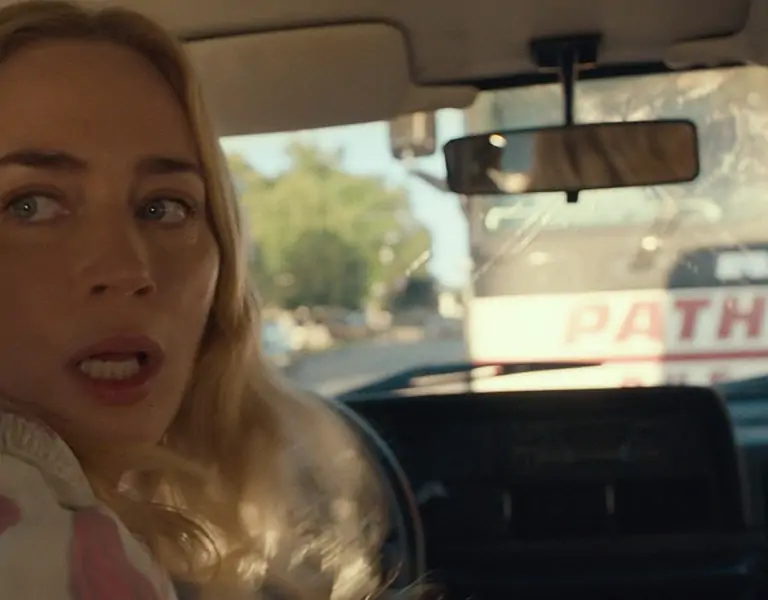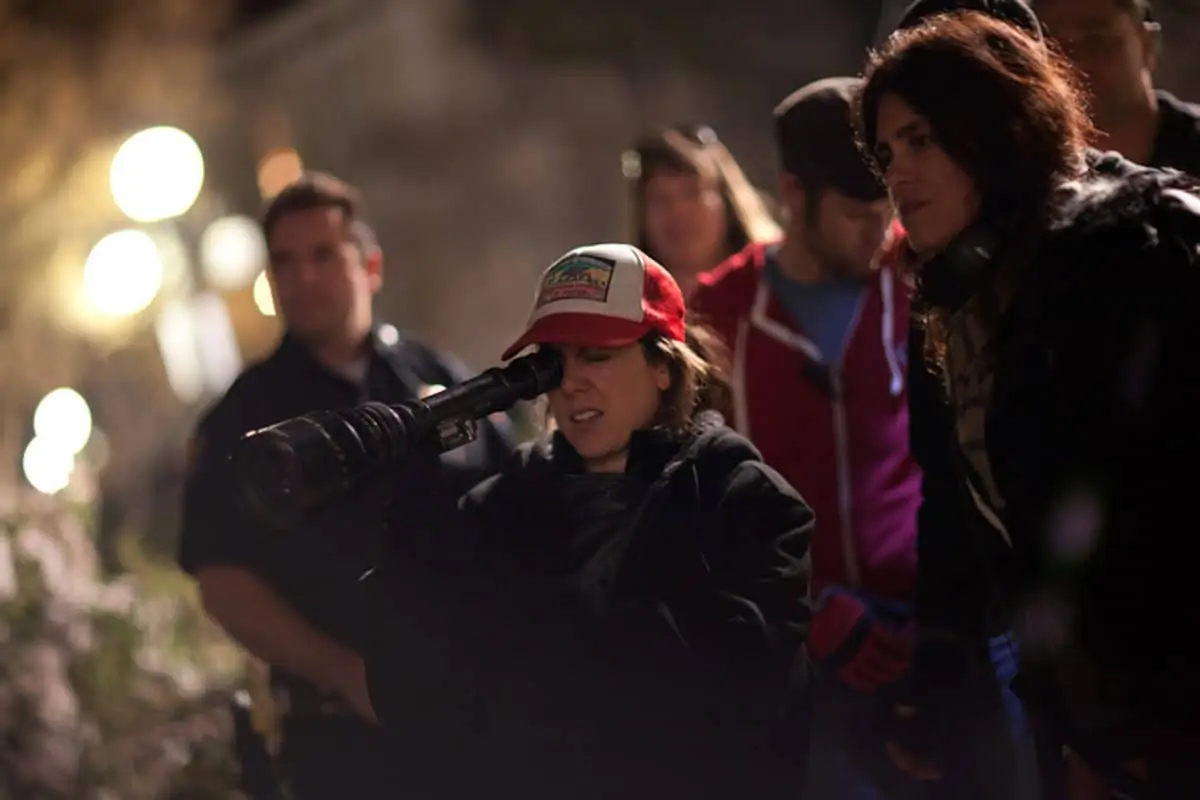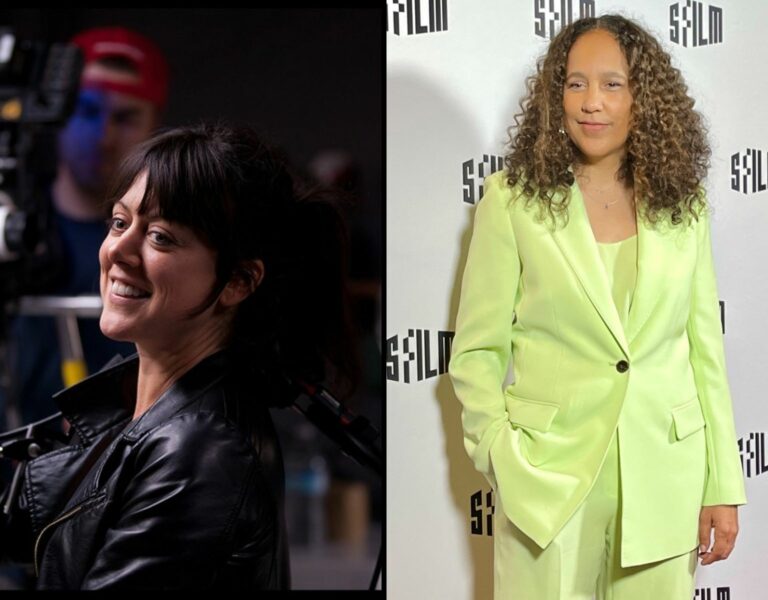BATTLE OF THE BRAVE
When celebrating the powerful Agojie tribe of female warriors and the vast kingdom of Dahomey on screen, Polly Morgan BSC ASC and director Gina Prince-Blythewood united in their desire to make a beautiful film that still felt raw and authentic.
The impact of The Woman King isn’t only evident in its action sequences. The cinematographer behind the film’s stunning visuals, Polly Morgan ASC BSC’s, believes the power of the story – based on true events, about a group of women in 19th century Africa who were respected as equals to men in the Kingdom of Dahomey – will be relatable for modern audience.
“Here we are in the 21st century, and all these things are happening for us as women, whether it’s new abortion laws in some parts of the States or Mahsa Amini’s tragic death in Iranian police custody,” she says. “This movie shows the strength we can have as women if we stick together. You can be tough and strong, or you can show your vulnerability.
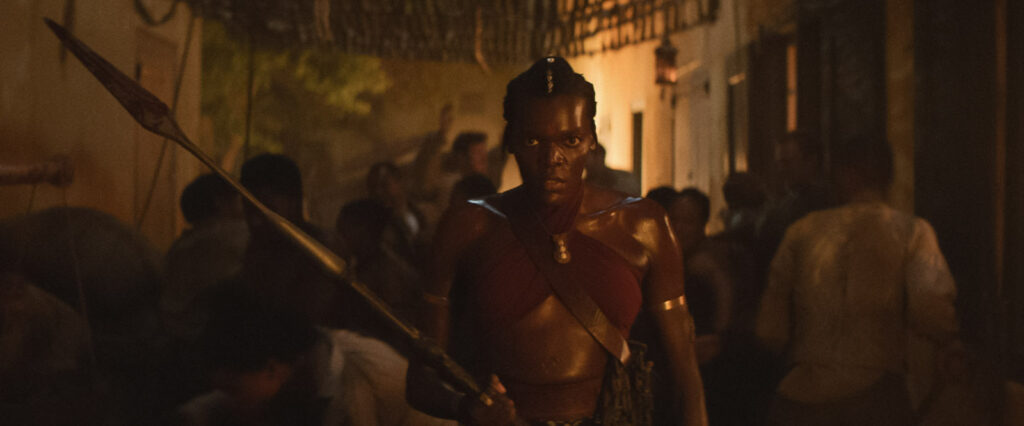
“The Woman King offers action, history, drama and explores themes of sisterhood, the mother-daughter relationship, rape, and abortion. It holds so many things within it which is why I think people are responding to it.”
In December 2020, following the birth of her second child, Morgan was discussing upcoming project Where the Crawdads Sing with her agent Tara Kromer when The Woman King came up in conversation. Excited by the premise of the film, Kromer mentioned Morgan to the producer Cathy Schulman.
The cinematographer was equally fascinated by the story and the script which was “so epic in its scope while also being a moving story of some incredible women.” Thrilled to be brought into the fold to help tell the inspiring tale, the cinematographer compiled a visual deck in the evenings and at weekends when shooting Where the Crawdads Sing in Louisiana.
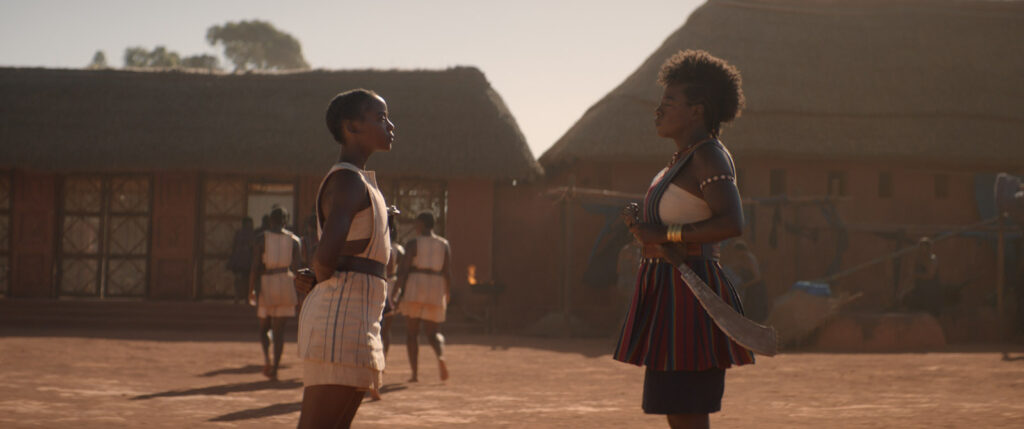
Director Gina Prince-Blythewood shared her ambition for the movie over Zoom – to portray the kingdom in a lush and rich way that wasn’t desaturated, dry, or dusty. She wanted the world to be colourful, and lean into the emotionality of African light, referencing dramatic silhouettes and evocative flares.
“Really showing these women in a way Gina hadn’t seen before was crucial,” says Morgan. “It was important to show how beautiful black skin is and how glorious these women were while still ensuring the film remained real and authentic as based on true events.”
Three days after wrapping Where the Crawdads Sing, Morgan was on a flight to South Africa, meeting Prince-Blythewood on route. She worked tirelessly on the two 12-hour flights to guarantee she knew the script inside out.
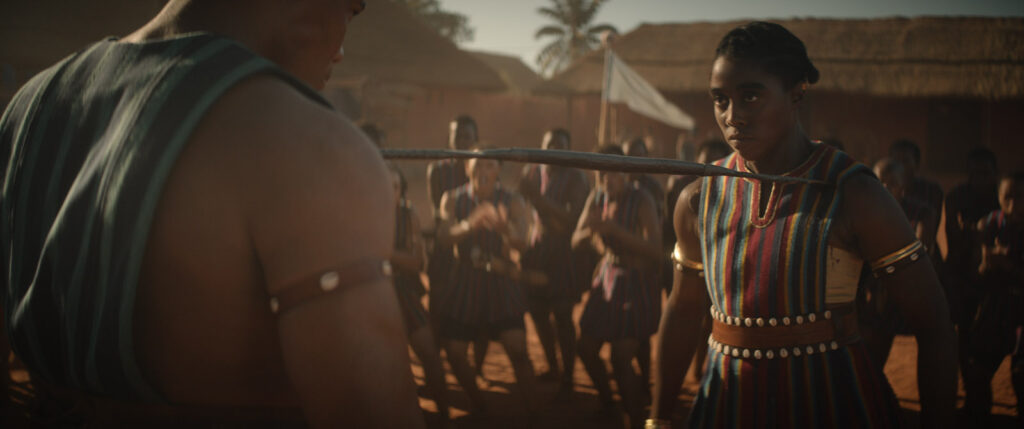
Despite being set in 1823 in the Kingdom of Dahomey in Western Africa, the movie was shot on location in and around Cape Town and KwaZulu-Natal in South Africa, with a splinter unit in Ghana.
Production designer Akin McKenzie and location manager Luke Longmore spent a fortnight exploringand shortlisting options before Morgan and Prince-Blythewood arrived to travel around South Africa, from Cape Town and the surrounding area to the northern part of the country, scouting two different areas for multiple locations.
When shooting in such remote locations, the cinematographer considers the suitability of the vista for the narrative, how to clearly portray Africa, and how best to contextualise the story to show where it is located. “Sometimes when you step onto a location and just feel it and talk about the scene, the locations choose themselves,” she says.
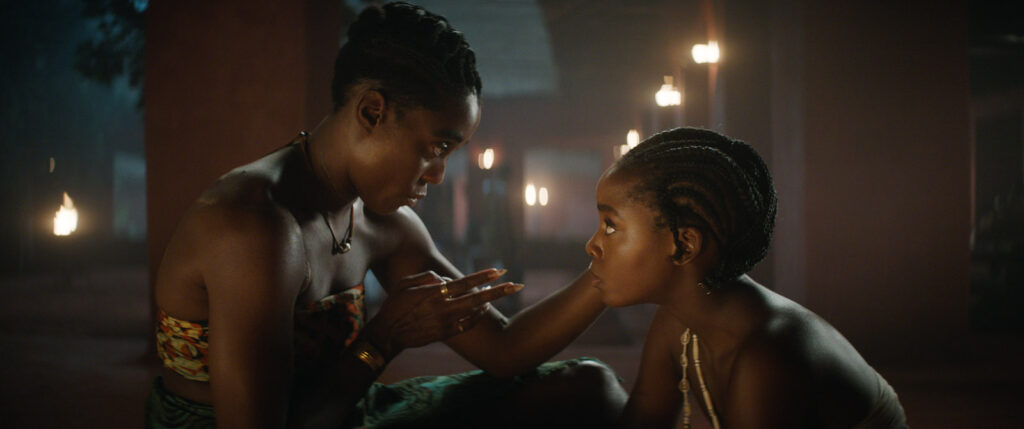
McKenzie and Morgan discussed what foliage could be found in West Africa and what the Greens department would need to bring in. They explored how to make South Africa look and feel like West Africa, where they would ideally have liked to have shot “but logistically, it was too difficult as they don’t have the support for a production of this size.” Determining how to get the gear and the people in and shoot efficiently with the right tools was also a priority “as the schedule was only 58 days which was really tight.”
Sunrises and sunsets highlighted in the script were significant for Morgan as they had “narrative value and were important to how the story progresses.” Morgan ensured that certain locations had potential to shoot to the West or East and worked closely with AD Dale Butler to make sure the schedule worked with the light.
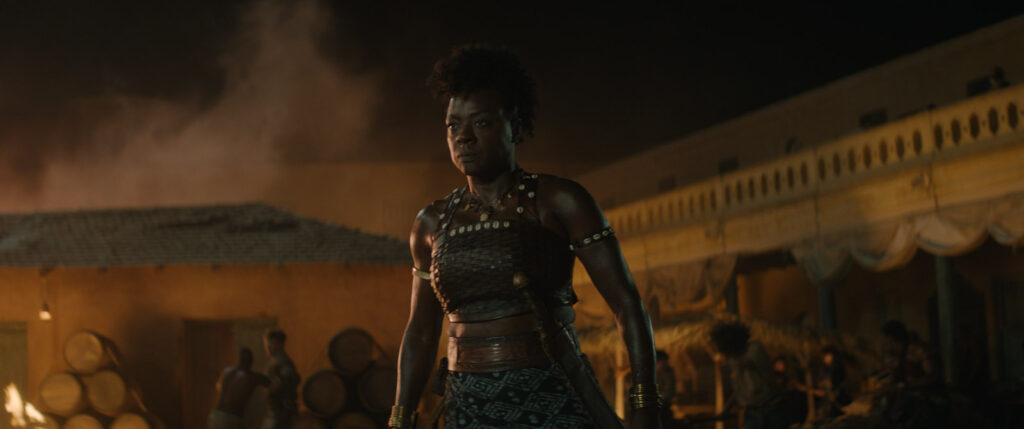
Intimate tale of epic proportions
Key phrases “intimately epic” and “pretty gritty” were coined by Prince-Blythewood early on – intimately epic referring to the micro and macro of the larger sequences and quieter more intimate scenes. “We contrasted the big moments with all the background and action by using various tools to tell that story, whether it be a Technocrane for the big, high, wide, scopey shots, or a handheld gimbal for lots of movement,” says Morgan. “And then we would quieten down for the intimate scenes focusing on relationships when the camera is still and we lean into the close-ups, which Gina loved.”
“Pretty gritty” relates to the importance Prince-Blythewood, as a black female director, and the black actors placed on the movie being inspired by significant true events. “It was an incredibly powerful project to work on and there was a lot of emotion connected to telling the story because it dealt with how their ancestors were sold and brought over to the States,” continues Morgan.
Avoiding “over commercialising” the film was at the forefront as Morgan and the crew strived to achieve the “fine balance of making sure the studio was on board but leaning into the realism and rawness of moments”. Prince-Blythewood wanted Morgan to shoot a beautiful movie, “but she also didn’t want it to be too glossy because the audience needed to connect with it and be swept into the journey with the characters.”
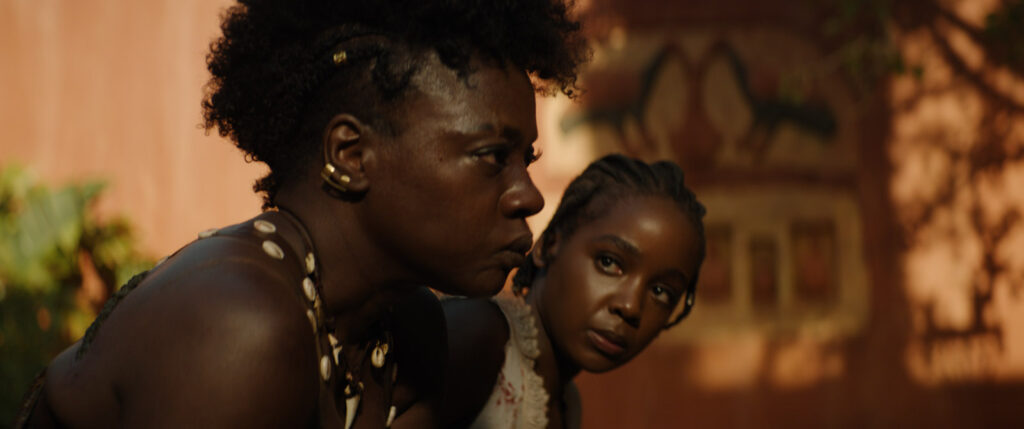
All creative decisions were informed by meticulous research, from production designer McKenzie’s detailed examination of the women and the period in which they lived in Dahomey through to costume designer Gersha Phillips’s research into textures and fabrics to allow her to hand make the costumes. During prep, papers written by Europeans and Americans after visiting Dahomey and meeting with King Ghezo were also examined.
McKenzie and Morgan shot tests of different skin tones against various shades of earth to choose which was best photographically and most authentic. The selected earth was then imported from the Northern part of the country and used to recreate the Kingdom of Abomey.
This preparation put Morgan in good stead for her conversations with gaffer Oliver Wilter when they discussed light motivation and color contrast from natural sources and firelight. While admitting that when photographing, she feels a need for the results to look as perfect as possible, on this occasion, Morgan told Wilter she wanted to lean into a less affected approach. “Yes, I wanted the women to look gorgeous, but I couldn’t always soften and mould the light because it wouldn’t be relatable. Luckily, I didn’t have the schedule to make everything perfect, which helped me let go a little and embrace the reality of the situation.”
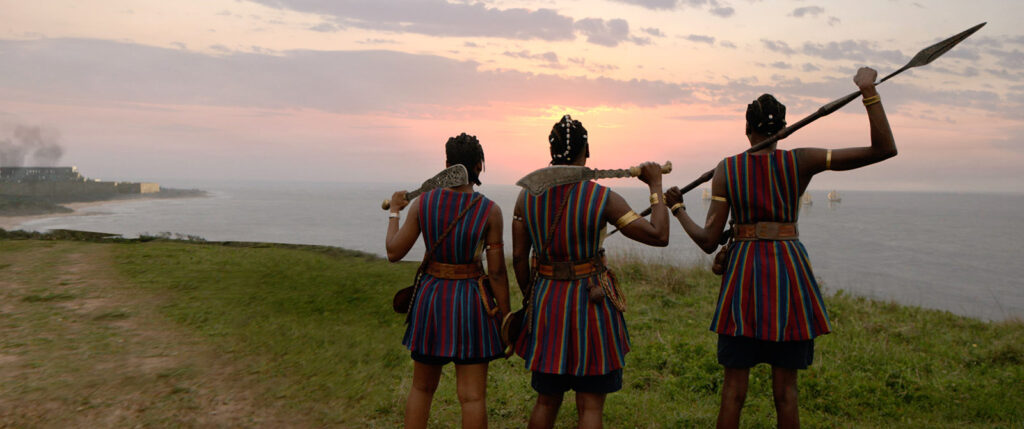
Prince-Blythewood and Morgan explored how to move the camera with the women and contrast the action against the stunning cultural kingdom. They wanted to “show off how beautiful their way of life in Abomey [the largest city in Dahomey, where the king’spalace was located] was, but we also needed to contrast that with the port of Quidah – one of the busiest ports dealing in the slave trade in Africa at that time.”
When discussing how to photograph Quidah and show the horror of the slave trade, the best approach to adopt was discovered naturally – putting the camera on the shoulder and shooting handheld. In contrast, the all-female military regiment, the Agojie, were captured through more graceful camera movements using a crane, Steadicam, and occasionally a gimbal rig.
“Shooting the sequences in Quidah with people chained up in the barracoons was an uncomfortable experience – it was a distressing energy to be around,” says Morgan. “We leant into the harsh heat and top light of the African sun and adopted a much higher contrast ratio to illustrate the ugliness of humanity.”
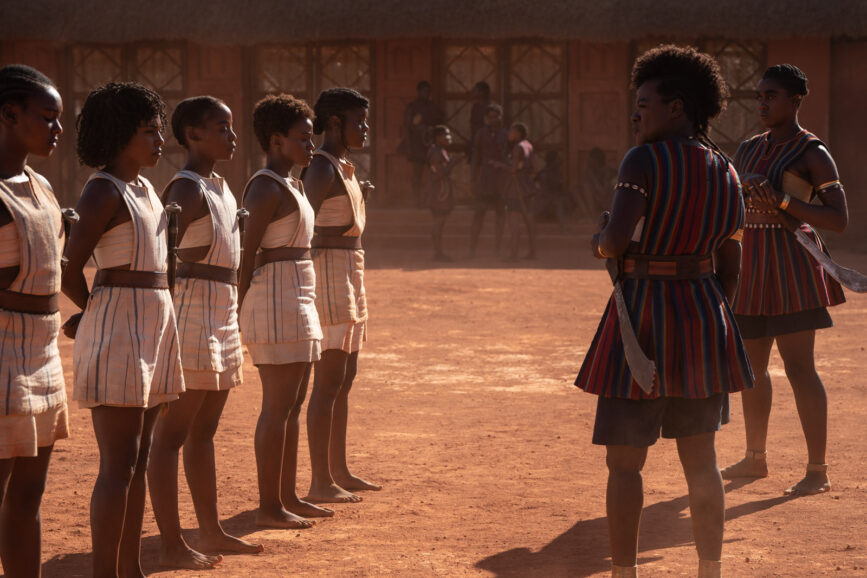
Walking onto the ginormous Abomey set for the first time was daunting, admits Morgan, and required surrounding the set with multiple cranes of different sizes because “there wasn’t time to reposition the cranes during a location move from one part of the place to another.” For the daytime Abomey scenes, 40×40 fly swatters were flown and 20×20 Ultrabounces reflected light back onto the actors’ faces.
“Like Where the Crawdads Sing, shooting these huge one- or two-day day exteriors were daunting because I wanted it to be raw and real, but shooting in the African sun in the middle of the day with multiple cameras is difficult,” says Morgan. “It helped that when I was working out such scenes with Gina, we travelled to and from set together, enabling us to discuss the plan for the day.”
When searching for a way to make the sun work for such scenes, Morgan “figured out a place in the middle of the day to jump the line of the action and flip the key light. So, in the morning, everything would be backlit, and side lit, and then I would jump the line, and make sure the rest of the day was backlit and side lit.”
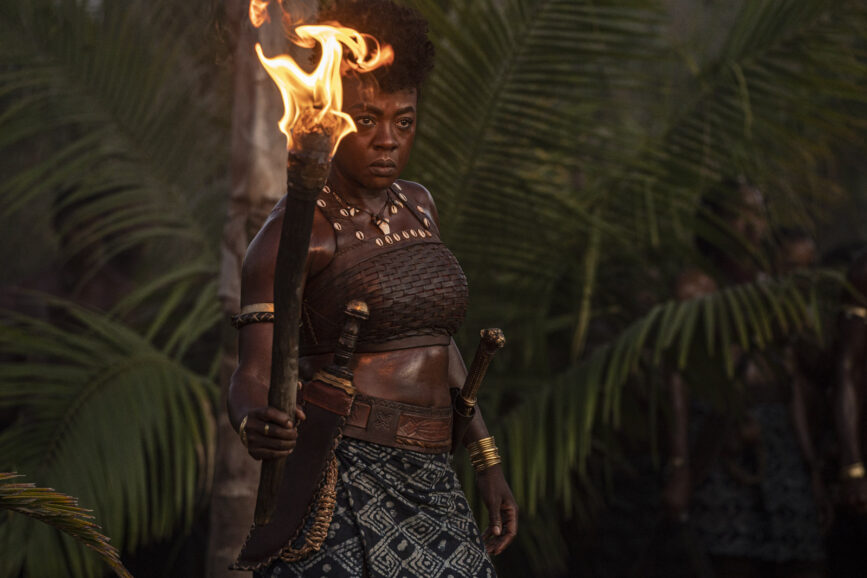
Having visited the location where the king’s palace would be built during the scout with production designer McKenzie, Morgan returned to Los Angeles for the month prior to shooting and worked with art director Christophe Dalberg and gaffer Wilter to ensure the palace would be built in the correct orientation, so when shooting in the summer months the path of the sun would work for the action and the light would look its best.
Build elements and practical lighting were explored using VR goggles and rendered in software program Enscape, allowing the way the models were lit and the position of sun and lenses used to be changed.
The aim for day interior lighting was to keep it atmospheric with a strong play on shadow and light and rich colour contrast between cool daylight and the warmth of firelight while hard light provided patterns and shafts of light.
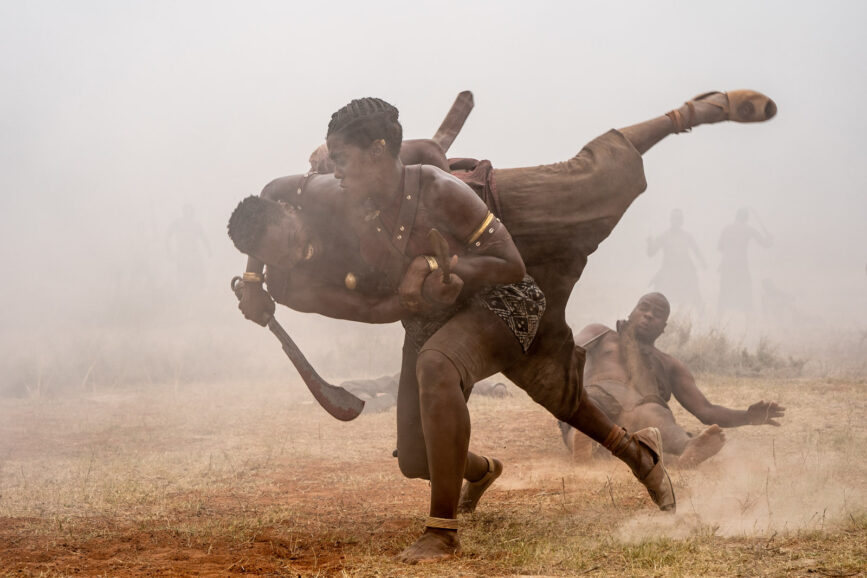
Night lighting featured warm and inviting firelight with contrasting cool tones of moonlight. Morgan was introduced to Filmgear’s “incredibly powerful” Helios fixture which were incorporated into all the night work. They were used in various sizes of moonbox, hung over the sets, with 12 units on a construction crane and six on the smaller cranes. For the final scene on the beach when the fort is on fire, a large truss rig was constructed featuring 40 Helios fixtures on a rig and dotted around the cliffs as firelight, combined with backlit smoke to create texture, lift the shadows, and soften contrast.
“I really enjoyed shooting that – it felt painterly, like a Delacroix,” adds Morgan. “It was an amazing experience working with gaffer Oliver to create the ambient night lighting with the moonboxes, varying the colour of the moon depending on where we were. In Quidah I didn’t feel the moonlight should be cool because there were more modern gas lanterns at that location which would overpower the coolness of the moon. So, we shot the moonlight there as ambient light and rated it at 3200K [compared to 6500K for beach moonlight, and 440-5600K for the Dahomey and enemy village moonlight].”
Astera tubes wrapped in cloud cloth also offered a quick and easy way to create fill light. As well as experimenting with the colour of the moon in different situations and embracing contrast, Wilter and Morgan lit with fire as much as possible, as people living during the period the film is set would have. To achieve this, the special effects department dotted Braziers around. These units or flame bars could also be moved close to the camera and used to light the actors. “It was fun to see that really warm, interactive light on their skin, and balance out the colour and exposure with the moonlight fill,” adds Morgan.
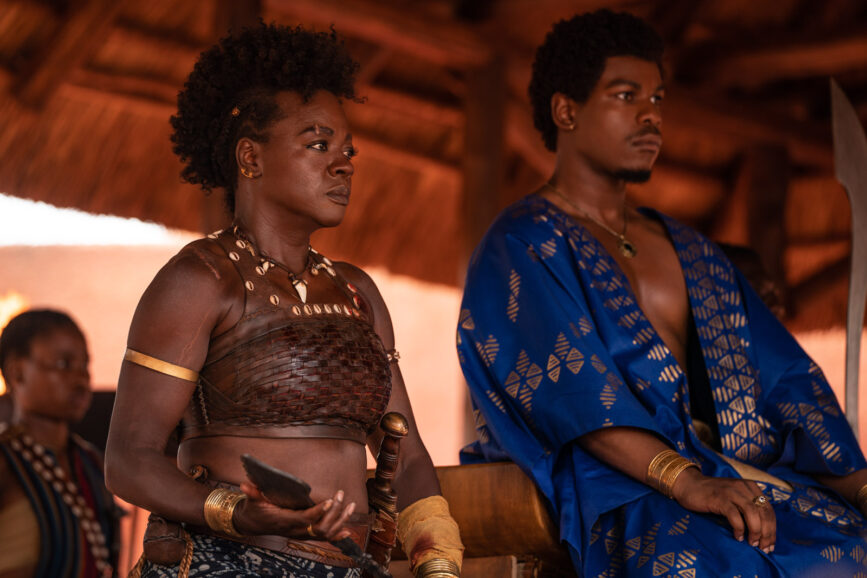
Capturing the beauty
When filming the black actors’ skin, Morgan aimed to “achieve a balance of ensuring it was exposed in a way that was bright enough, especially against a very dark night sky, while not over lighting it. My conversations with Gina were about how we do that in a way that feels real. It was such an honour to shoot because black skin is so beautiful, and the colour contrast worked so well.”
In the daytime, Morgan used a Rota Pola (rotating polarizer) to control the highlights because she “often couldn’t get in there to adjust the lighting, especially when filming the larger scenes.” Working closely with the makeup department was also vital. “Like in the film, the Agojie women covered themselves in oil when they went into battle so people couldn’t grab hold of them. So, when working with oil on the skin, we looked at how bright those reflections were to figure out the best contrast. We lit and shot our characters to make them shine and show both their strength and vulnerability.”
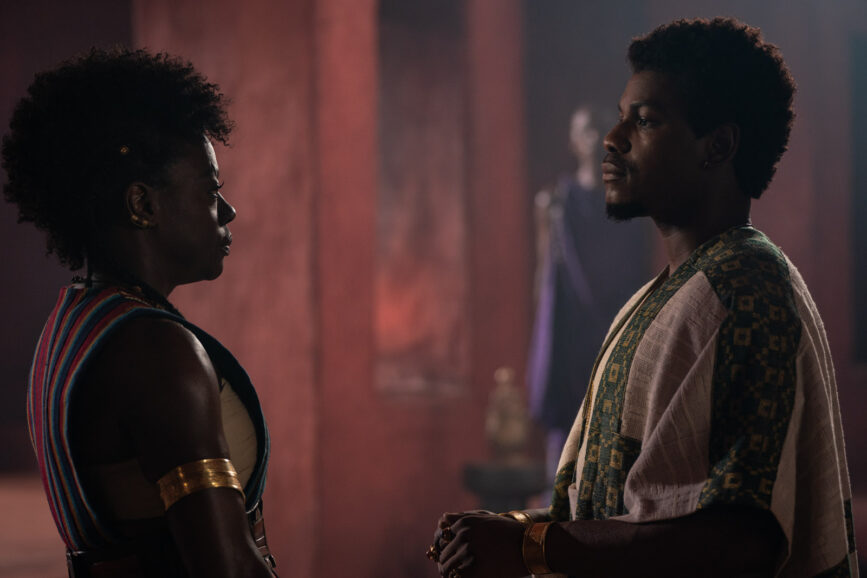
Although the conversations took place too late for this production, Morgan was fascinated by the work carried out by Mandla Dubeat Digital Melanin in Cape Town, a company focused on educating filmmakers about how best to expose darker skin tones. Dube highlights how film stock and digital sensors have a bias towards lighter skin tones and how important it is to be aware of the tonal range of darker skin. “The different variations of melanin in skin calls for delicate care in how to photograph it,” says Morgan. “Dube points out that when we talk about 18%, middle grey – an exposure tool for cinematographers – 18% relates to Caucasian skin. So, all our photographic systems are based on photographing lighter skin, and that the industry needs to further understand darker skin and develop tools to help capture it in all its glory.”
Morgan mainly looked for inspiration from art from various time periods, including the frequent use of a single source in Flemish and Dutch Golden Age paintings. “This influenced the scenes in the boarding house where it was all about a single source and playing with light and shadow, and not being afraid of the dark just because I was shooting darker skin tones,” she says. “Obviously, you get into the DI and there’s a conversation about how dark or bright other people want things to be, but ultimately, we wanted it to feel realistic and not over lit. I just wanted to make sure the negative was thick enough, so we had that flexibility in post.”
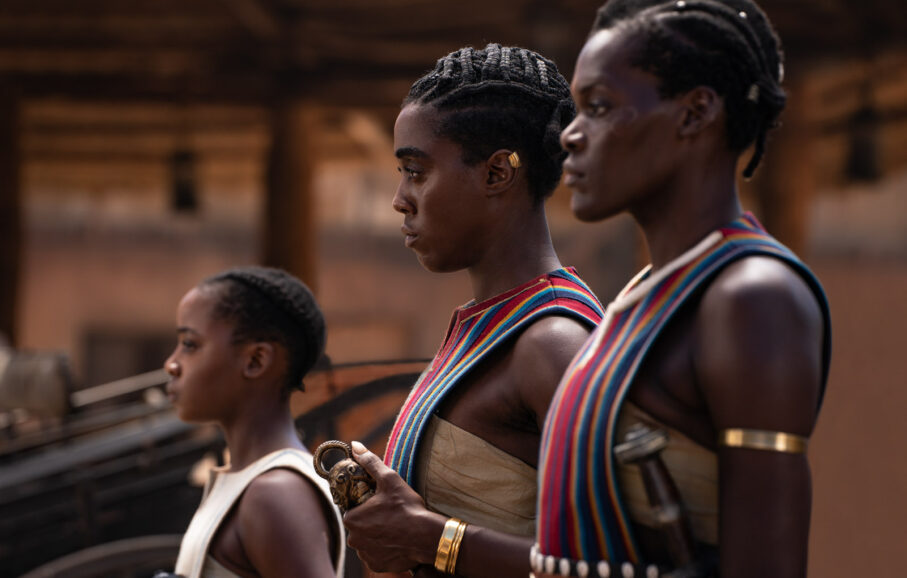
Fighting force
Camera movement to capture the epic action sequences was influenced by films such as Braveheart, Apocalypto’s fluid blend of crane or Steadicam with handheld, the opening sequence of Gladiator – noting the fast cuts used – and TV series such as Vikings. Although different in its visual approach, The Revenant’ssubjectivity of the camera and longer takes were also referred to.
“It was exciting for us to photograph these women doing their own stunts and pushing themselves. We could move freely and show off their physicality. In an interview, stunt coordinator Danny Hernandez said the women in this film were tougher than many male Marvel actors,” says Morgan.
“As Gina isn’t a fan of Steadicam [many of her past films were handheld, including 2020’s The Old Guard], in prep it was interesting for me to work out how to capture these sequences which we didn’t feel should be handheld, but Gina also didn’t want to shoot with Steadicam. I love to use a track and dolly or dance floor and a crane but sometimes, especially on a 58-day shoot, Steadicamis the best tool.”
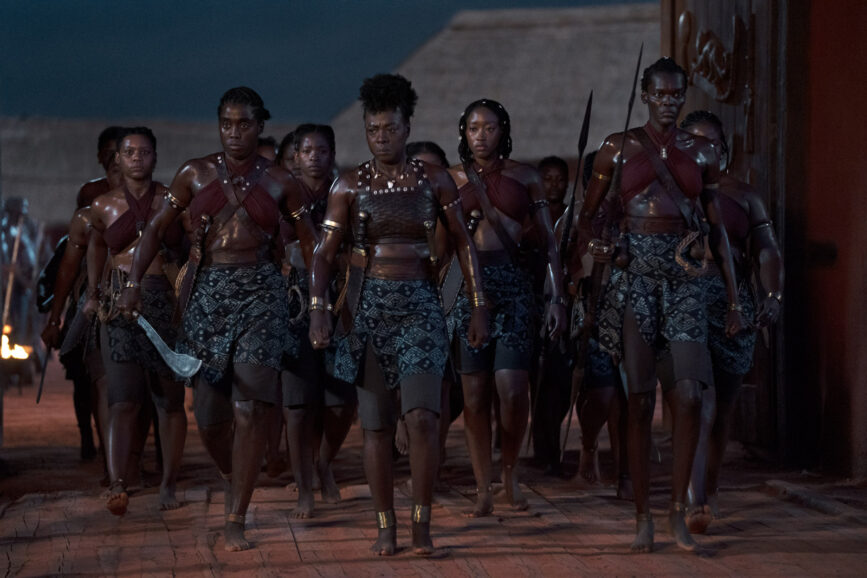
On this occasion they agreed the gimbal was the most suitable solution “because it could move down to the floor, up high, or around, so it felt like a hybrid between handheld and Steadicam and was a bit more flexible.” During testing some of the stunts it also became clear they would need to move as quickly as the actors during fight scenes. To allow this, key grip Roderick Dean Smith developed a rig comprising a crane with a spring balance rigged under the forks or basket. “The spring balance is the force gauge used in car manufacturing that holds weight, says Morgan. “We hung a drop cable from it that in turn held the weight of the remote head and camera or just the camera. We’d increase or decrease the tension to balance the camera and then give us maximum freedom to run around with it and still keep the image smooth.”
When the DJI Ronin 2 remote head was put on the cable, Smith would run with the camera, while A camera operator Colin Anderson and Morgan were on headsets. While Morgan prefers to be on set with the director than in the DIT tent, this wasn’t possible due to the number of cameras required to capture multiple angles simultaneously. “It was wonderful that Gina chose to sit with us in the tent – along with our incredible DIT Nigel Tompkins – while I spoke to the operators.”
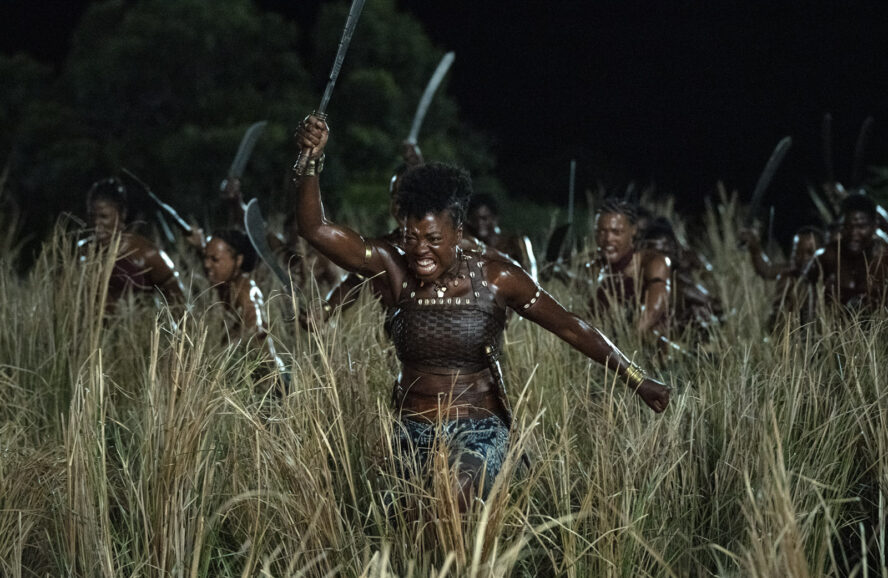
For the biggest battle sequence, the remote head was removed, and the rig held just the camera, enabling the operator to freely and swiftly transition from high to low. “It was smooth rather than a crazy handheld feel. The higher the crane, the bigger the radius for the camera,” adds Morgan. “The ingenious system was used in all battle sequences to move with the actors and the action, working with the stunt coordinator to capture the women and their incredible performances.
“This was supplemented with other cameras handheld on gimbals and also on a Technocrane. Gina loves to shoot with multiple cameras which was a bit of a shock for me coming from Where the Crawdads Sing where we pretty much shot the whole movie with a single camera. In contrast, The Woman King was mainly shot with three cameras and sometimes four or five.”
All battle sequences were shot at 48fps and with a 360 shutter to make it possible to speed it up in post, if needed, with no artifacts in motion. Wide lenses were used to capture the movement of the weapons. The DJI Ronin 2 with Master and Inertia Wheels was used extensively on cranes, jib arms, dolly, Flowcine G-Link arms and on the spring balance rig. The Technocrane Supertechno 50 on a Panavision Panaconda motorised crane base also proved useful “because of the vast size of the sets and the speed at which it could be driven.”
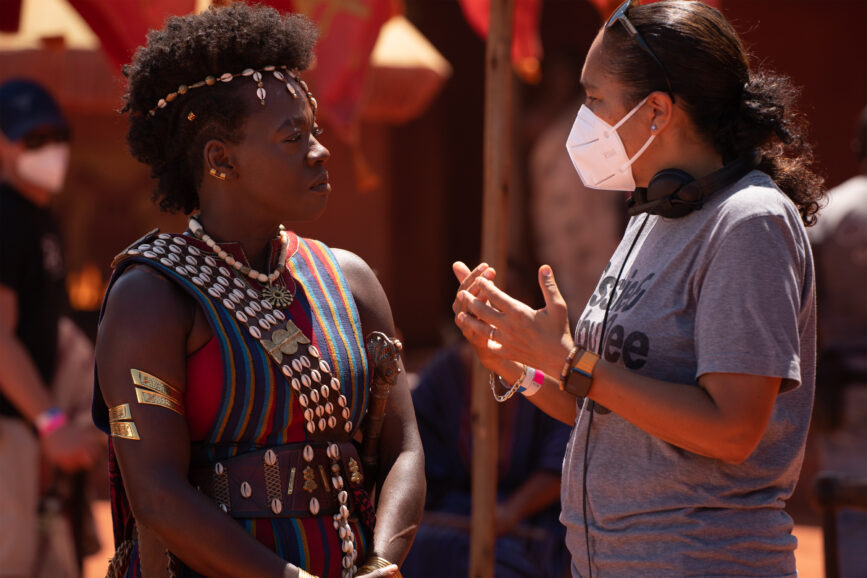
South African Colin Anderson travelled over from the US as A camera operator, with Dale Rodkin on B camera and Peter Belcher, Meike Chinneryand Sally Lowtaking on C, D and E camera. In December 2021, a couple of weeks into shooting, Omicron hit, more than half the crew tested positive and production was shut down until the new year. When shooting resumed, as Anderson was only meant to be on the production until the end of the year, Rodkin became A camera operator and Belcher moved to B camera. Meanwhile, a second two-camera unit was headed up by local South African DP Mannie Ferreira.
“South African crews have a reputation for being some of the best crews in the world. It was a tough shoot and there wasn’t a lot of time, but they are so technically capable and have excellent working relationships with each other. It was a case of divide and conquer and an amazing collaboration between all departments,” says Morgan.
“Gina brought me into every aspect of production, whether it was prop, costumeor design meetings or talking with the editor. She said, ‘If it’s in front of the camera, you’ve got to be involved with it.’ I love that and I’m happy to be more involved if it helps me work better.”
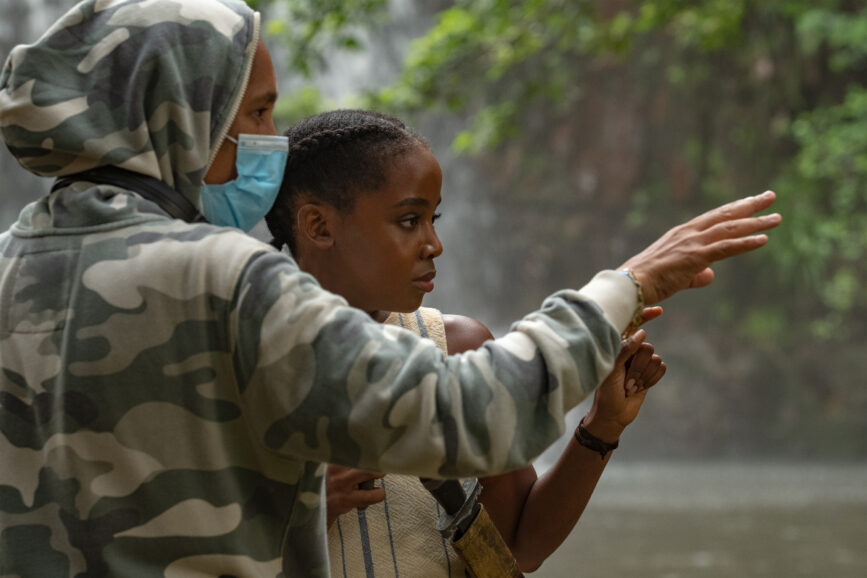
In the zone
In one of their first conversations, Prince-Blythewood told Morgan, “I want someone that’s going to push me. I want to try different things on this movie.” That desire to explore new creative and technical options was fulfilled through camera system selection.
Prince-Blythewood was a fan of the large-format feel of the ARRI Alexa 65 used for The Old Guard, but when discussing how to move the camera to capture the action of The Woman King, Morgan highlighted that a smaller camera would also be required.
“Shooting Crawdads was an amazing prelude to this because I’d gone down that path of wanting a light and flexible camera system to shoot lots of dayexteriors in nature. When I got onto the scout for The Woman King, I told Gina while I love the Alexa 65 and we should use it on location, we should also work with five smaller Mini LFs to move in a simpler way.”
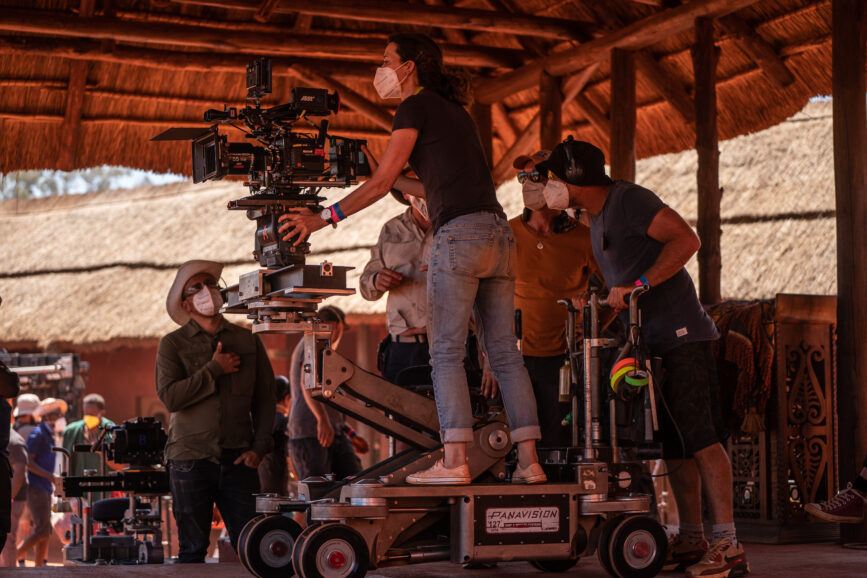
As Morgan believed the film would be “a Braveheart – a classic that would stand the test of time”, it was important for it to be a historical epic with a classic feel which anamorphic lenses would best achieve. “Those types of movies are shot with C Series anamorphic on film. During lens testing with Dan Sasaki at Panavision, Gina loved the anamorphic approach but not the anamorphic aberrations which were more exaggerated in oldersets like the C Series,” says Morgan.
Therefore, they opted for the T Series – “a fantastic newer set of anamorphic lenses that are faster and have closer focus which was ideal when shooting close up with wider lenses as we could get nice and close to the actors in intimate moments. We shot at T2.8/4 to embrace the quality and feel of the glass as much as possible.”
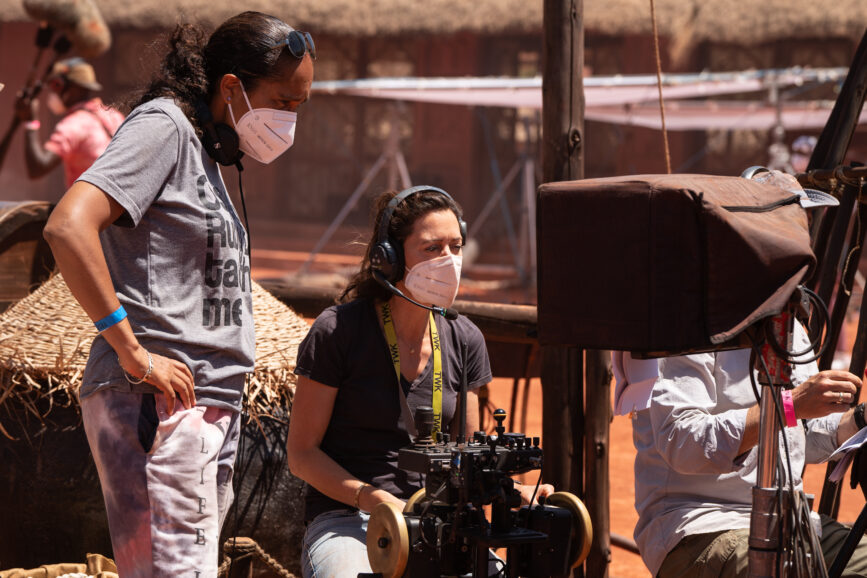
Sasaki also extended the lenses to cover the larger sensor of the Mini LFs, reduced the falloff at the edges, adjusted the lens coating to produce a fatter negative by lowering the contrast. “Lowering the contrast, especially with the darker skin tones, gave me more range in the toe,” adds Morgan. “The shadows didn’t get deep as quickly.” The lenses naturally lifted the shadows as well as accentuating the glowing characteristic of firelight candlelight.”
The Alexa 65, which was used for the location work in the north of the country, was paired with Panavision Primo 70 spherical lenses which were detuned and modified to match the T Series, with the whole camera package supplied by Panavision in Cape Town.
Heart of the story
In pre-production, Morgan worked remotely with Company 3 senior colourist Walter Volpatto – who Prince-Blythewood had teamed up with on The Old Guard – to build a LUT with a similar contrast curve to film which was examined during camera tests in Cape Town.
Morgan wanted the “colours to be vibrant and lush but feel real like a beautiful BBC Richard Attenborough documentary.” She also requested Volpatto make the LUT slightly on the darker side to encourage her to light for a thicker negative. Morgan then joined forces with colour specialist Volpatto again in LA for two weeks in August 2022 for the final grade.
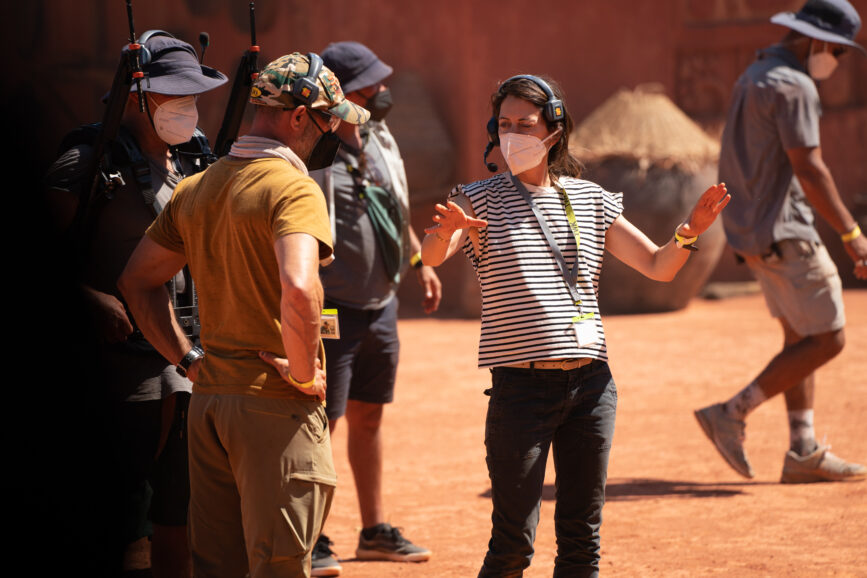
The cinematographer also enjoyed a rewarding collaboration with special effects supervisor Paul “Paulie” Pieterse and his team, especially for one of the most challenging sequences, the biggest battle. The cinematographer referred to Adam Arkapaw ACS’s “gorgeous use of smoke” in Macbeth (2015) for inspiration.
“That works well when you’ve got cloudy Scottish skies but working with smoke in the middle of an African summer where the sun is very high all day was a challenge,” says Morgan. “But I felt strongly we needed smoke in that battle sequence. Due to Omicron, we didn’t have many people and the wind made it difficult to work with the smoke, but teaming up with the brilliant special effects department – who were instrumental in making a period movie in Africa that felt authentic, painterly, tactile, and visceral – we managed to put a lot of smoke in the air, light fires, and work with the dust that was blown around organically by the wind.”
Scenes such as these required the magic touch of the visual effects team – including visual effects supervisor Sara Bennett and visual effects producer Claudia Dehmel – in the form of crowd replacement and extension and green screen work to further build the world. During the final battle sequence, where Quidah is set on fire, the wind was so strong, the structures that had been built could not be burnt, so the visual effects team added the fire in post.
Powerful performances are also a driving force of the historical epic. The experience of working with “such an exceptional cast” will live long in Morgan’s memory: “To be close to Viola Davis (Nanisca) and Thuso Mbedu (Nawi) in that powerful final scene in the garden, gave me goosebumps. It was such a masterclass, and an honour just to be there. And there were times when John Boyega (King Ghezo) brought me to tears because his performance was so moving.
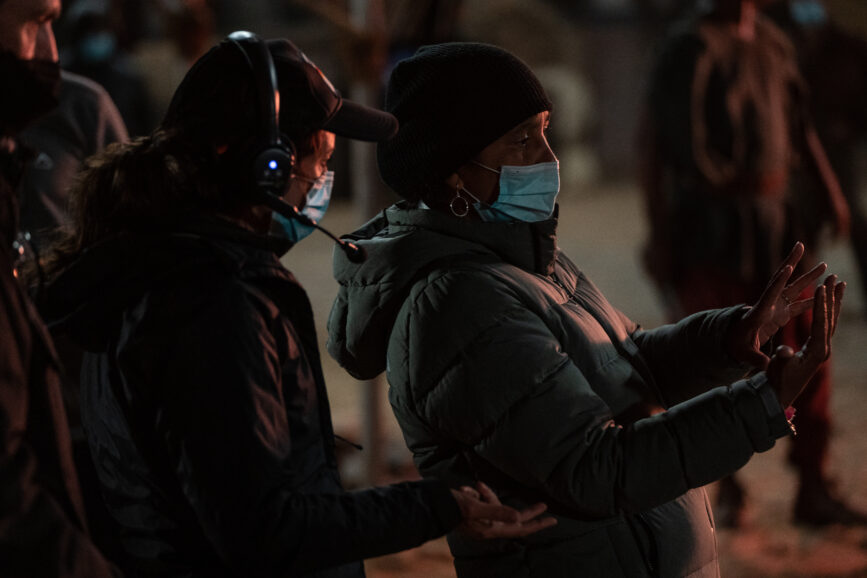
“There was a lot of emotion and power in making this movie. It meant so much to the actors and it was so important for them to tell the story which you can really feel on screen. The shoot was challenging for everyone because of the locations, the weather, and tight schedule, but I never heard anybody complain because it was such a rewarding experience.”
While female empowerment forms a central part of the narrative, making a historical epic was equally thrilling for Morgan as “it was big and action-packed but at its heart, it was a drama between a group of women.” Reflecting on the productions she has lensed and the films she is drawn to, The Woman King is yet another example of material that is vast in scope yet intimate at its core.
“A Quiet Place Part II was a thriller-horror but really, it was a family drama. Where the Crawdads Sing was this big movie about a murder and what unfolds in the marshes, but at its core it’s a drama about abandoned girl. What drew me to The Woman King was a female led drama set within the challenges and excitement of an action movie.”
